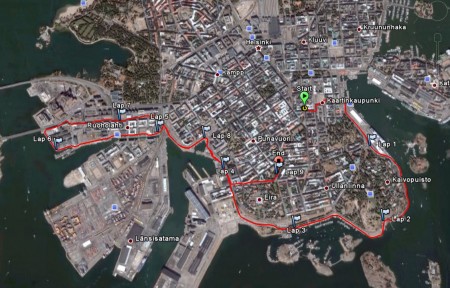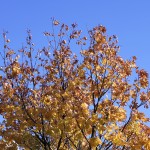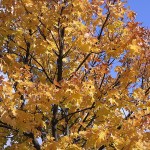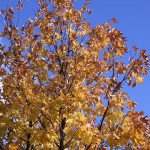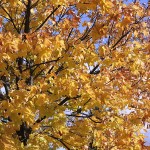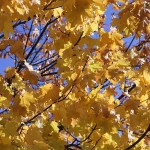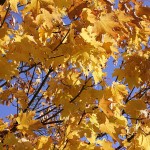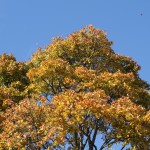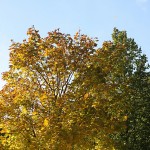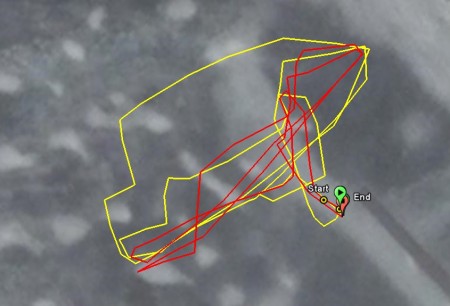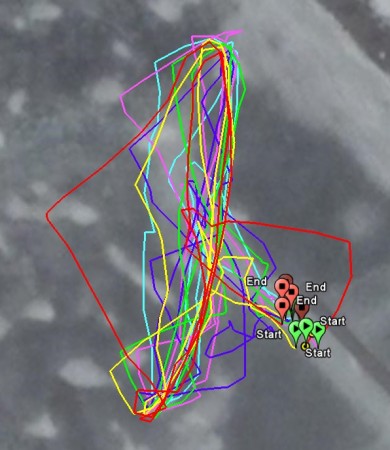Author: admin
Fluorescent DNA
Some very early testing of fluorescence imaging in our optical tweezers instrument. A 10 kb long piece of DNA (ca 3 um long when stretched) is held between two optically trapped microspheres. The DNA is coated with a fluorescent dye (SYBR-gold) which is exited by a 488 nm blue laser and the fluorescence signal is collected with a CCD camera looking through a narrow-band filter centered on the emission spectrum of SYBR-gold.
At around 1:10 in the video there's a double-tether (two DNA-molecules between the beads). We don't want that but there is not much that we can do about it, except discard the data. At the very end there's an image of QDots on the coverglass surface.
Links - October 22, 2009
Links - October 15, 2009
- 1Mb Broadband Access Becomes Legal Right In Finland -
- The Nobel Prize in Medicince 2009 (comic strip) -
- Stop! Gmail Feature Prevents Emailing the Wrong Person -
- Self-induced back-action optical trapping of dielectric nanoparticles -
- Optical trapping of quantum dots in a metallic nanotrap -
- Optical mirror trap with a large field of view -
- Fall Foliage -
- That’s a Nice Arabidopsis thaliana You’ve Got There -
- Nobel Prize in Physics 2009 -
- Inside the Nobel Prize: How a CCD Works -
- Dynamic position and force measurement for multiple optically trapped particles using a high-speed active pixel sensor -
- DSLR Cameras, Filters, and Ha Emission Nebulas -
- Richard Dawkins on “The Greatest Show on Earth” -
9k jog
Autumn Leaves
See also XKCD
Links - October 8, 2009
Garmin 405cx aboard an IOM
The 405cx gps-watch is small and light enough to just tape to the aft-deck of an IOM. Today's event in Tampere had 12 races but I missed a few due to electrical problems. Races 1 and 2 above, and races 7-12 below. It's funny how google-maps and google-earth show permanent winter and ice in Tampere 🙂
The raw-data (tampere_gpsdata.zip) is available in TCX format as well as Google-earth KML format from the garmin connect website.
Anyone have any software or matlab code to extract the instantaneous speed from this data and plot it? Might be useful for further CFD investigations or VPP-programs. Mostly light and shifting no1 rig the whole day. It will be interesting to compare with no2 and no3 rig in a real breeze.
Are there even smaller and lighter GPS-dataloggers? How long before we can have a GPS on every boat and watch playback of the race afterwards at home?
Links - October 1, 2009
- Video of Earth from MESSENGER -
- Ohm -
- OCC offset -
- Thermaltake's brain-melting Level 10 PC chassis gets real, unboxed -
- Light Pollution Filters for Astrophotography -
- Zoom In on Lagoon Nebula with Super-High-Res Image - one 668-megabyte TIFF file, mmm...
- Laser -
- Farnell buys CadSoft (Eagle) -
- Reader Photo Gallery: Awesome DIY Astronomy -
- Volume Packing of Breakfast Cereal -
- QWXGA video output through Kensington HD Universal USB dock - X301 + this one, mmm...
- Google Frame Benchmarks 9x Faster than IE8 -
- Google SideWiki Brings Comments To Everyone -
Canon 500D HD video test
Testing how 720p @ 30 fps recorded with the 500D looks on youtube:
Unfortunately the blog theme calls for 450 pixels wide pictures and videos, so you'll have to click through to youtube to see the glorious HD http://www.youtube.com/watch?v=G7xq1h5KwuE
